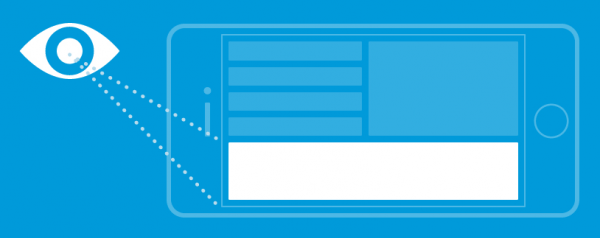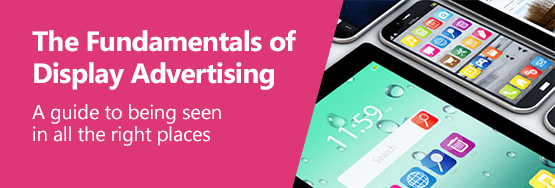What is Viewability?
A “viewable impression” is a term used to describe ads that have had the opportunity to be viewed by the digital user. A “non-viewable” impression on the other hand is an impression that a digital user would have potentially seen if site design, layout, or scroll depth had been different.
For example, a page may have loaded with the online display advert, but the user might not have scrolled far enough down the page to see the ad in situ.

Viewability is the metric which aims to track ads that can actually be seen by users. Yes, that’s right, if you’re not careful you can indeed pay for advertising impressions that might not even be seen! This has been a bigger issue since the rise of programmatic display.
Historically, brands have traded on a CPM basis and worked towards a percentage viewability target. This is because 5-6 years ago, most display was bought direct with the publisher, not programmatically through open exchanges. Now, 70-75% of display is traded programmatically (80-85% for video).
We all know the famous quote from John Wanamaker:
“Half the money I spend on advertising is wasted; the trouble is I don’t know which half.”
It appears not much has changed since the 80’s; It’s thought that up to 54% of ads aren’t viewable in display advertising if you don’t put the right technology layers in place. (We’ll come on to that in a bit). Viewability was cited as one of the top concerns from agencies (45%) and brands (49%) going into 2018 according to a survey by WARC in Dec 2017.
What’s the Industry Saying?
The IAB and MRC set about creating standards for us all to attach success to:
- For a standard desktop banner, the threshold is 50% of the ad being in view for 1 second.
- For a desktop video, half of the ad must be in view for 2 seconds.
- There’s also a standard for larger banner advertising, where 30% of the ads pixels ought to be in view for more than 1 second.
Still, that’s not enough for some brands in 2018. Recently in the press, IBM (in conjunction with their agency ‘Group M’) requested a 100% target on pixels loaded for display and video. HP and Nestlé have also created their own viewability standards and it seems that as the programmatic industry matures, brands and agencies are creating their own success criteria from which to judge effectiveness. There’s definitely a feeling out there that the MRC and IAB should revisit their standards from 4 years ago and reboot expectations.
How Much Does Viewability Affect Display Campaigns?
According to Sizmek’s performance data, ads with a 70%+ viewable threshold had a significantly higher performance. We know viewability is a factor for both brand and performance in producing successful campaigns. However, it isn’t the only metric for success.
It’s important to look at viewability in the context of other performance benchmarks such as:
- Brand lift
- Consideration
- Recall
- Exposure
- Dwell time
The challenge we all have is knowing whether just seeing an ad is enough. In the digital space where user engagement is a priority, we have to think about whether all ads are seen in the same way.
What Can Brands and Agencies Do?
Fortunately, technology for measuring viewability has been around for a while. Examples of well established technology tools we use include:
- Integral Ad Science
- Meetrics
- comScore VCE
- Double Verify
Some of these are now freely available in ad platforms and ad servers’ technology stack, allowing ease of tracking in-view as a marker of success.
What Does the Future Look Like?
Digging out my crystal ball, I would go as far as to say we will eventually trade on viewability. Publishers and ad exchanges are open to charging more (or less) for viewable impressions. You can’t really argue the fact that an ad that isn’t seen has literally no value to the advertiser.
Some large global players such as Unilever and P&G have already adopted this cost viewability trading model and conversations are in development between some of the largest players in the ecosystem. This can only pave the way for smaller agencies and clients to start trading in this way too.
It is a fact that some platforms and ad formats are harder for the technology providers to track. However, if bigger publishers and content distributors take greater responsibility for enabling third party verification and tracking, we would all feel the benefit.
I think Blockchain and its accountability will only help push this item up the agenda. In the meantime, it’s about working with an agency that demonstrates a clear understanding of what viewability means for brands and how they will adopt technologies to drive successful display media campaigns.
Further Reading
If you’d like to read more about Display Advertising, we have a guide available to download for free: The Fundamentals of Display Advertising

